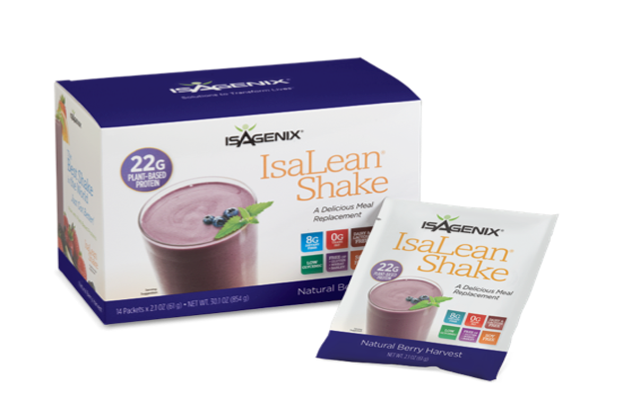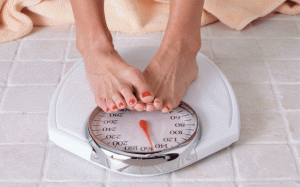Editor’s Note: Andrew Weil, M.D. is a world-renowned leader, best-selling author, and pioneer in the field of integrative medicine. This March 2013 you have a special opportunity to hear Dr. Weil in person at the Chopra Center’s signature workshop
Journey into Healing: Balance, Heal, and Transform Your Life, where he will be a keynote speaker and guest lecturer.
Learn more here>>
In my book Spontaneous Happiness, I write about lifestyle practices that can help people achieve and maintain happy lives. Bear in mind that by “happy,” I am not referring to endless bliss. Despite what many in the media proclaim these days, such a state is neither achievable nor desirable. Instead, these practices are designed to help most people reach and maintain a state of contentment and serenity. From there, a person can still experience appropriate emotional highs and lows, but knows that he or she will soon return to a pleasant state that might be termedemotional sea level.
I’ve summarized information about ten of those practices. These will, I believe, be of particular benefit for those who struggle with mild to moderate depression, but can also potentially benefit nearly anyone who follows them:
1. Exercise
Human bodies are designed for regular physical activity. The sedentary nature of much of modern life probably plays a significant role in the epidemic incidence of depression today. Many studies show that depressed patients who stick to a regimen of aerobic exercise improve as much as those treated with medication. Exercise also appears to prevent depression and improve mood in healthy people. Many exercise forms – aerobic activity, yoga, weights, walking and more – have been shown to benefit mood.
Typical therapeutic exercise programs last for eight to fourteen weeks. You should have three to four sessions per week, of at least twenty minutes each. For treatment of depression and anxiety disorders, activities of moderate intensity, like brisk walking, are more successful than very vigorous activity.
I am a particular fan of integrative exercise – that is, exercise that occurs in the course of doing some productive activity such as gardening, bicycling to work, doing home improvement projects, and so on. Many people find it far easier to stick to activities like this than to lifting weights or running on a treadmill.
2. Follow an Anti-Inflammatory Diet
Normally, inflammation occurs in response to injury and attack by germs. It is marked by local heat, redness, swelling, and pain, and is the body’s way of getting more nourishment and more immune activity to the affected area. But inflammation also has destructive potential. We see this when the immune system mistakenly attacks normal tissues in such autoimmune diseases as type 1 diabetes, rheumatoid arthritis, and lupus. Excessive inflammation also plays a causative role in heart disease, Alzheimer’s and Parkinson’s diseases, as well as other age-related disorders, including cancer. More recent research indicates that inappropriate inflammation may also underlie depression – so controlling it is key to both physical and mental health.
Perhaps the most powerful way to control inflammation is via diet. My anti-inflammatory diet consists of whole, unprocessed foods that are especially selected to reduce inappropriate inflammation, as well as provide abundant vitamins, minerals, and fiber. It consists of fruits and vegetables, fatty cold-water fish, healthy whole grains, olive oil, and other foods that have been shown to help keep inflammation in check. For details, see the
anti-inflammatory food pyramidat my website.
3. Take Fish Oil and Vitamin D
Adequate blood levels of these nutrients has been strongly tied to emotional health. They are so necessary and deficiencies are so common in the developed world that I believe everyone, depressed or not, should take them. Take up to three grams of a quality, molecularly distilled fish oil supplement daily – look for one that provides both EPA and DHA in a ratio of about three or four to one. I also recommend 2,000 IU of vitamin D each day.
4. Take Depression-Specific Herbs
Specifically for those with mild to moderate depression, I suggest trying:
- St. John’s Wort (hypericum perforatum): This European plant appears to work well for those affected by low mood. Look for tablets or capsules standardized to 0.3 percent hypericin that also list content of hyperforin. The usual dose is 300 milligrams three times a day. You may have to wait two months to get the full benefit of this treatment.
- SAMe (S-adenosyl methionine): A naturally-occurring molecule found throughout the body, SAMe (pronounced “sammy”) has been extensively studied as an antidepressant and treatment for the pain of osteoarthritis. Look for products that provide the butanedisulfonate form in enteric-coated tablets. The usual dosage is 400 to 1,600 milligrams a day, taken on an empty stomach. Take lower doses (under 800 milligrams) once a day, a half hour before the morning meal; split higher doses, taking the second a half hour before lunch.
- Rhodiola (rhodiola rosea): A relative of the jade plant native to the high northern latitudes, rhodiola appears to improve mood and memory. Look for 100-milligram tablets or capsules containing extracts standardized to three percent rosavins and one percent salidroside. The dosage is one or two tablets or capsules a day (one in the morning, or one in the morning and another in early afternoon). This can be increased to 200 milligrams up to three times a day if needed.
5. Do Breathing Exercises
Conscious breath control is a useful tool for achieving a relaxed, clear state of mind. One of my favorite breathing exercises is the 4-7-8 (or Relaxing) Breath. Although you can do the exercise in any position, sit with your back straight while learning the exercise. Place the tip of your tongue against the ridge of tissue just behind your upper front teeth and keep it there through the entire exercise. You will be exhaling through your mouth around your tongue; try pursing your lips slightly if this seems awkward. Then:
- Exhale completely through your mouth, making a whoosh sound.
- Close your mouth and inhale quietly through your nose to a mental count of four.
- Hold your breath for a count of seven.
- Exhale completely through your mouth, making a whoosh sound to a count of eight.
- This is one breath. Inhale again and repeat the cycle three more times for a total of four breaths.
Note that you always inhale quietly through your nose and exhale audibly through your mouth. The tip of your tongue stays in position the whole time. Exhalation takes twice as long as inhalation. The absolute time you spend on each phase is not important; the ratio of 4:7:8 is important. If you have trouble holding your breath, speed up the exercise but keep to the ratio of 4:7:8 for the three phases. With practice you can slow it all down and get used to inhaling and exhaling more and more deeply. This exercise is a natural tranquilizer for the nervous system.
6. Try Cognitive Behavioral Therapy (CBT)
This relatively new form of psychotherapy helps patients overcome habitual negative views of the world and themselves, and has been shown to be among the most effective psychological interventions for anxiety and depression. A full course of treatment is fourteen to sixteen sessions, with occasional booster sessions during the following year to maintain improvement. CBT can be done individually or in groups, and people can also get started with self-help books and online programs.
7. Laugh
Smiling and, especially, laughing, are potent mood boosters. One way to quickly, intentionally inspire laughter is via laughter yoga. Begun by Dr. Madan Kataria, a physician from Mumbai, India, the first “social laughter club” convened in March of 1995 with a handful of people. Now, according to the official Laughter Yoga website, there are more than 6,000 clubs in sixty countries.
The method used in laughter yoga clubs is straightforward. After brief physical exercises and breathing exercises under the direction of a trained leader, people simulate laughter with vigorous “ha-ha’s” and “ho-ho’s.” In the group setting, this “fake” laughter quickly becomes real and contagious and may continue for a half hour or more. And the joy lingers; regular participation in laughter yoga clubs has been shown to improve long-term emotional and physical health in a variety of ways, including a significant lowering of the stress hormone cortisol.
8. Limit Media Exposure
Today, many of us are choking on “data smog,” a dense cloud of trivial, irrelevant, or otherwise low-value information made possible by the internet’s power to disseminate vast amounts of media virtually free. The result is fractured attention spans and attenuated human relationships. Monitor the time you spend with digital media (television, the web, email, text messaging, and so on) in a given week, and cut that amount at least 25 percent in the following week. Use the time you free up for outings in nature, exercise, or face-to-face communication with friends. If you like the result, keep restricting virtual life “surfing” and expanding real-life, connected, human experiences.
9. Forgive
Forgiveness is almost universally held by philosophers and saints to be a key to happiness – and modern research confirms that those who can quickly and easily forgive when appropriate enjoy better emotional health. Conversely, resentment is the fuel that feeds depressive rumination, and can quickly spiral into a self-reinforcing low mood. Fortunately, the ability to forgive can be cultivated. The Stanford Forgiveness Project (see
learningtoforgive.com) offers books, audio and video courses, and online programs that can help.
10. Practice Gratitude
Author G.K. Chesterton wrote, “You say grace before meals. All right. But I say grace before the concert and the opera, and grace before the play and pantomime, and grace before I open a book, and grace before sketching, painting, swimming, fencing, boxing, walking, playing, dancing and grace before I dip the pen in the ink.” I suspect Chesterton didn’t do this automatically. He knew that, like forgiveness, gratitude can and should be cultivated through diligent practice.
One powerful method is keeping a gratitude journal. Spending a specific time each day or week recording things for which one is grateful has been shown boost subjective happiness levels in as little as three weeks. A less formal practice – and one that I follow – is to devote a few moments of my morning meditation session to feel and silently give thank for all of the good things in my life. As a result of doing this for several years, I find myself often making mental notes throughout the day of blessings such as rain here in my desert home, flowers that are opening in my garden, or a glorious sunset.
Of all of the practices listed in this article, I believe learning to feel and express gratitude may be the most important in achieving and maintaining a happy life.
For a comprehensive examination of ways to achieve emotional well-being, see my book
Spontaneous Happiness and its companion website,
SpontaneousHappiness.com.



